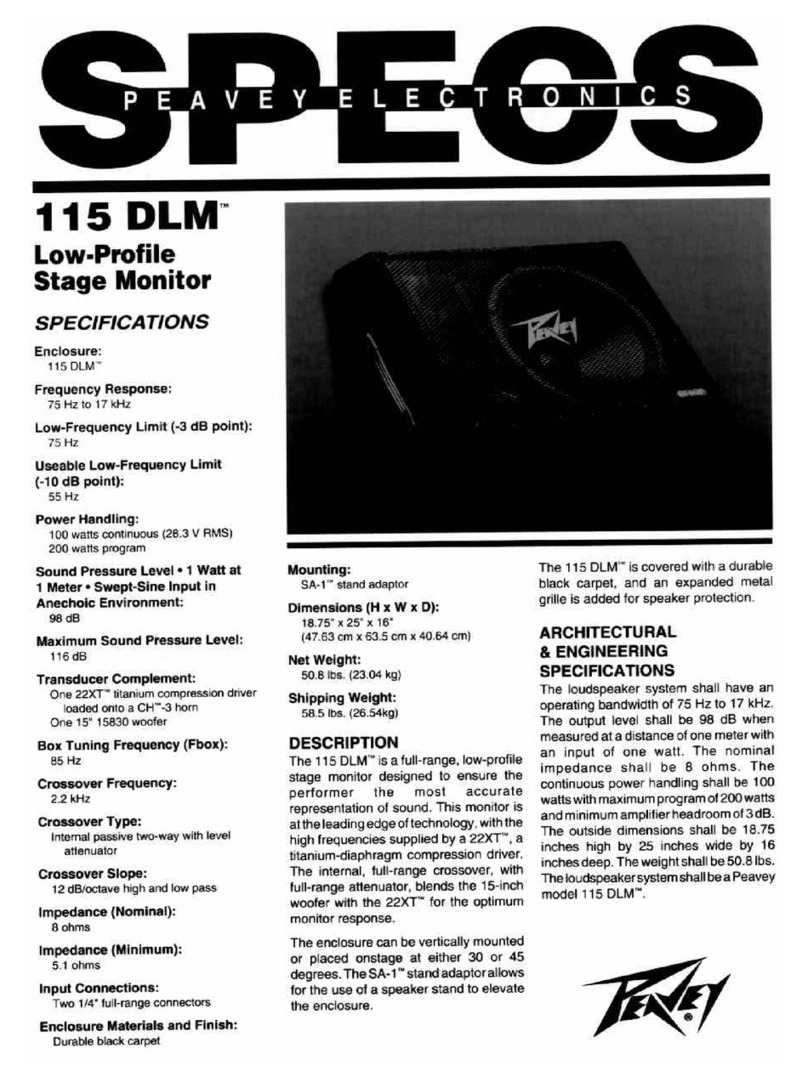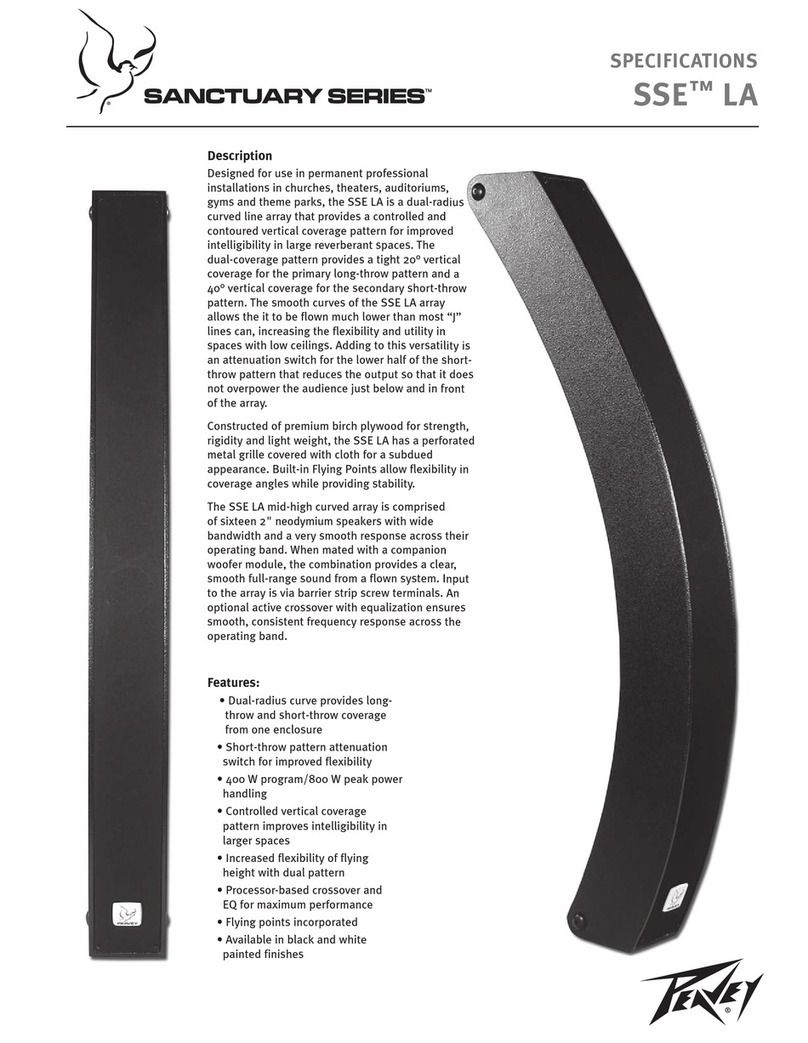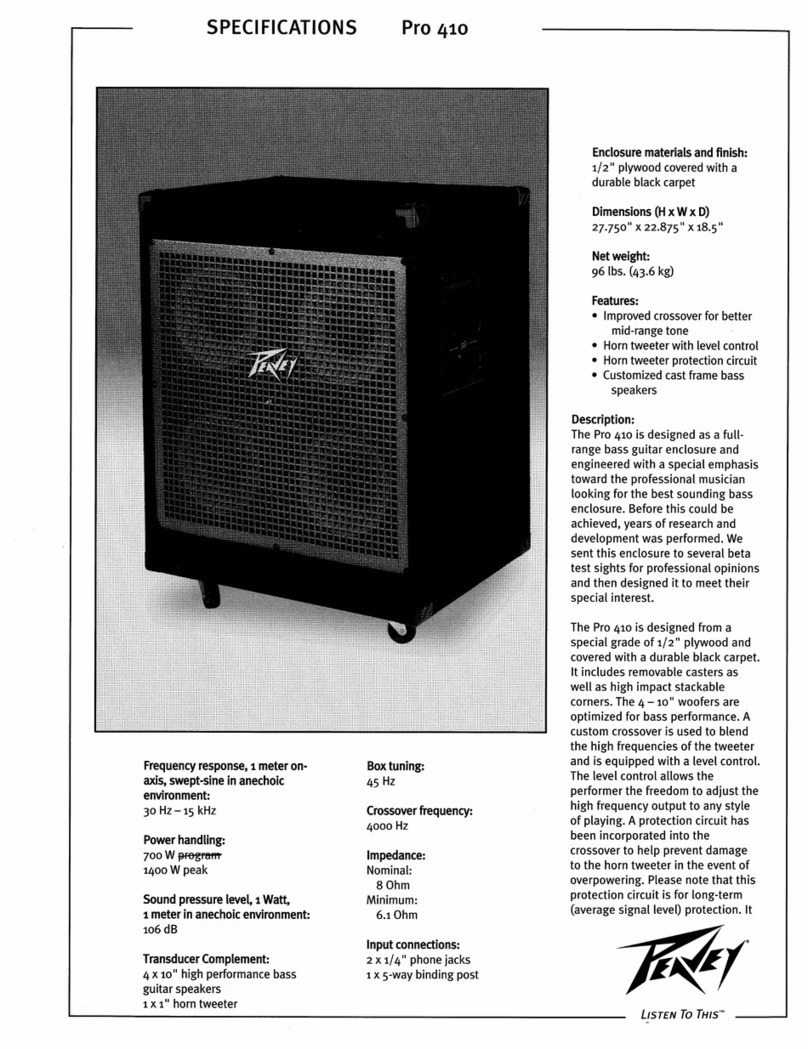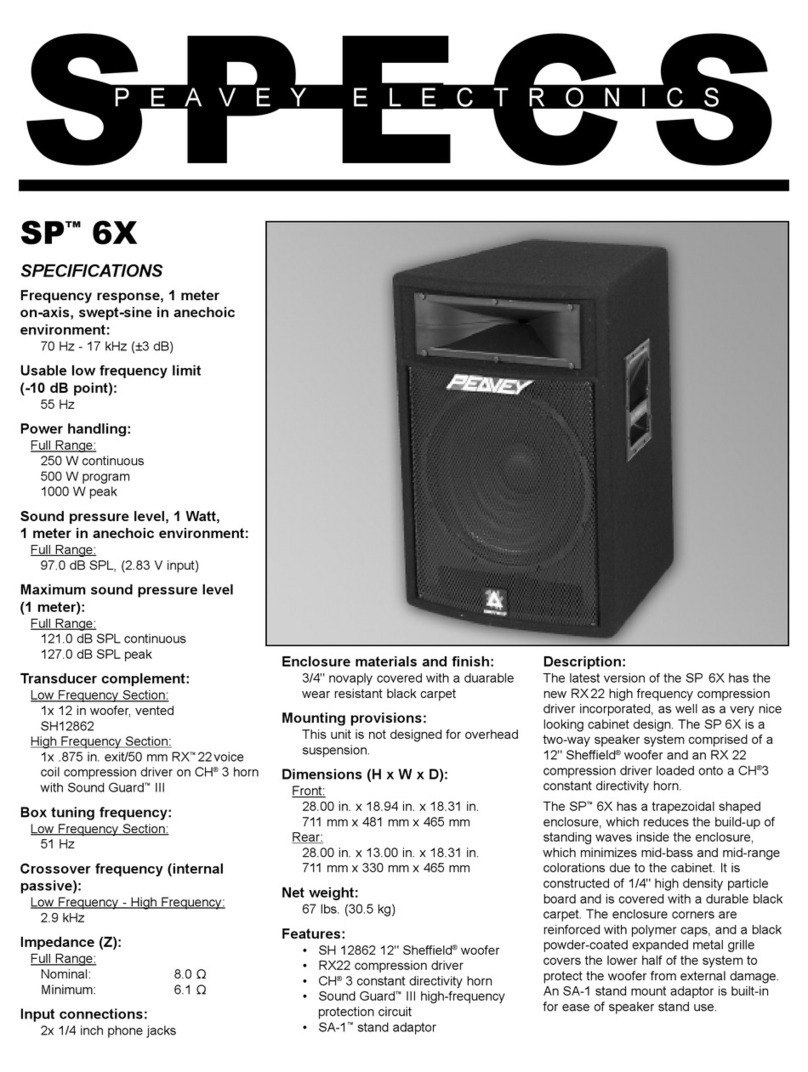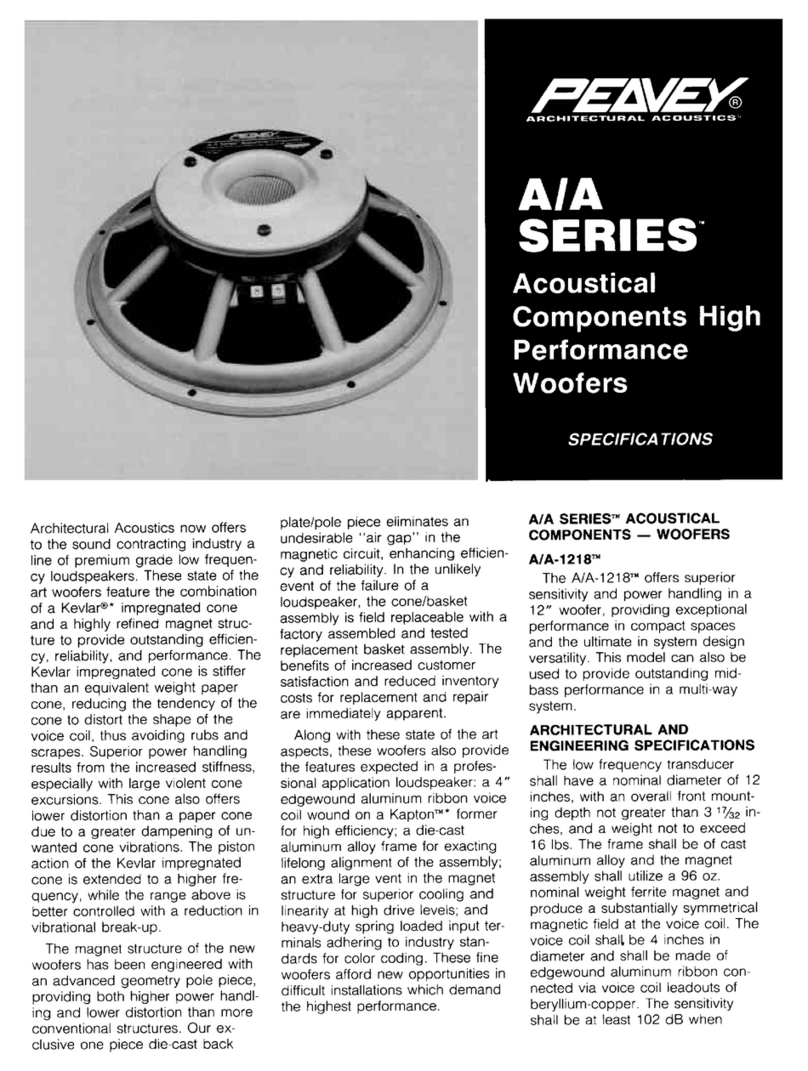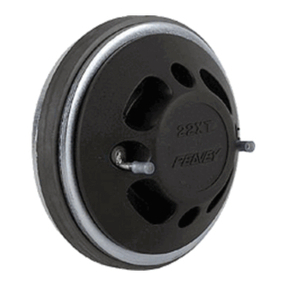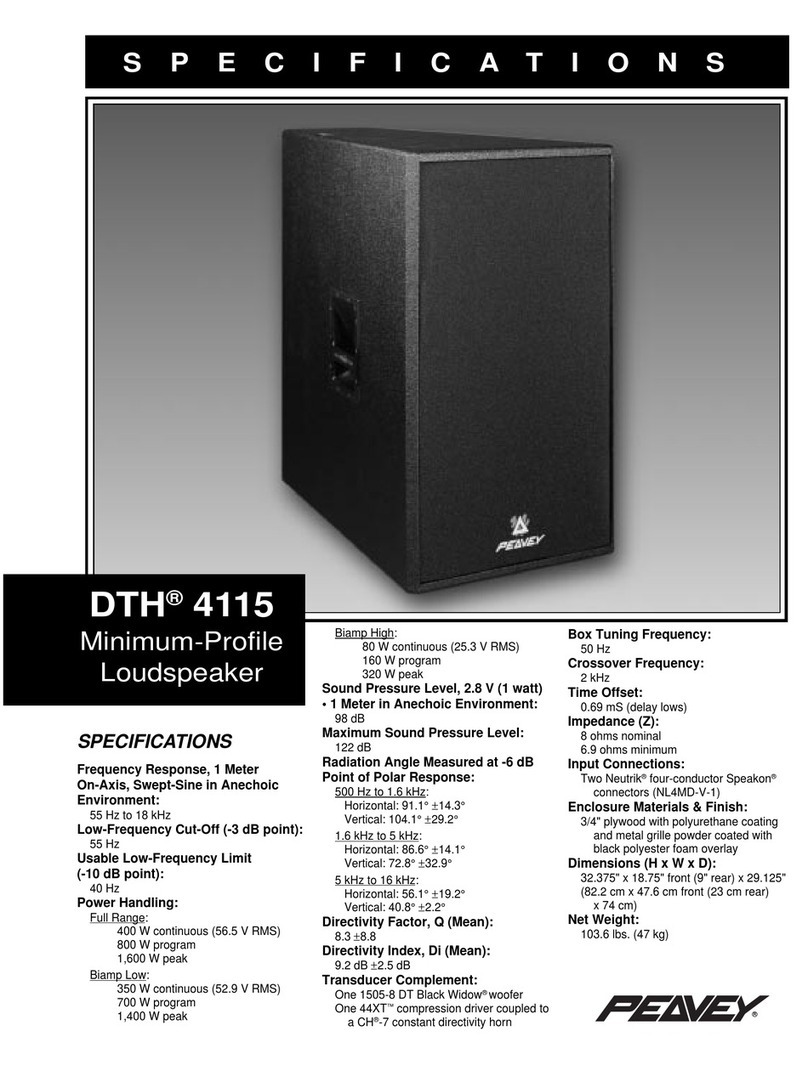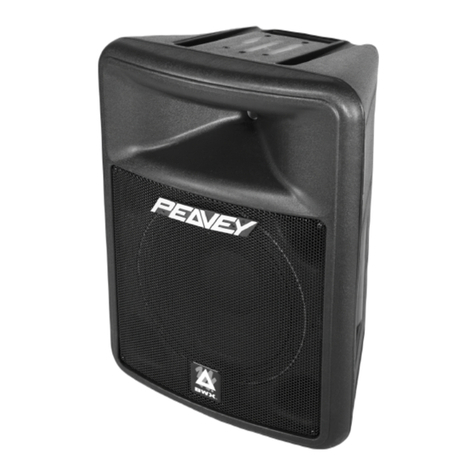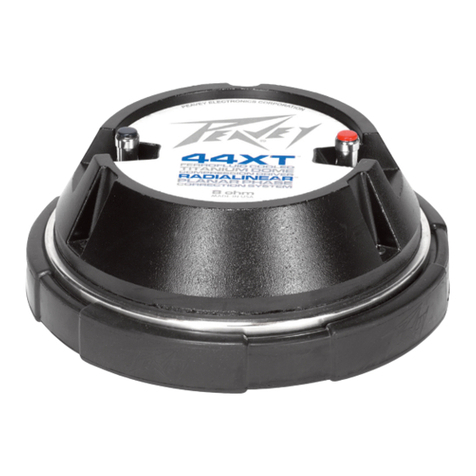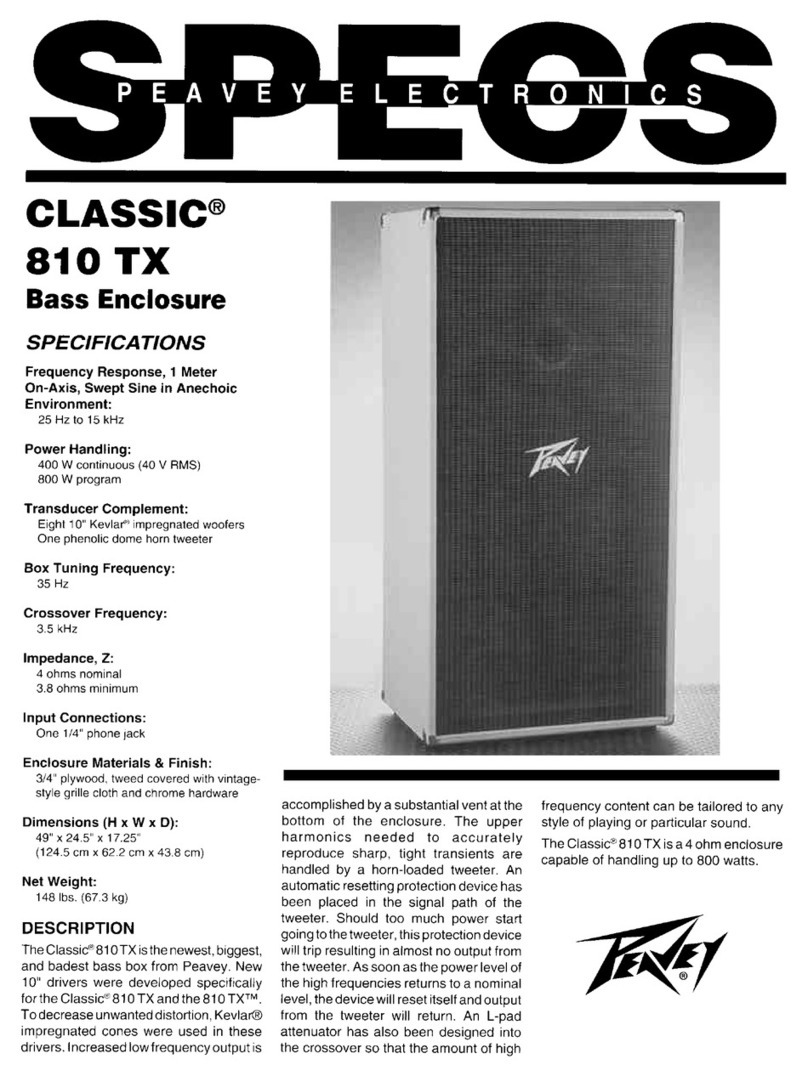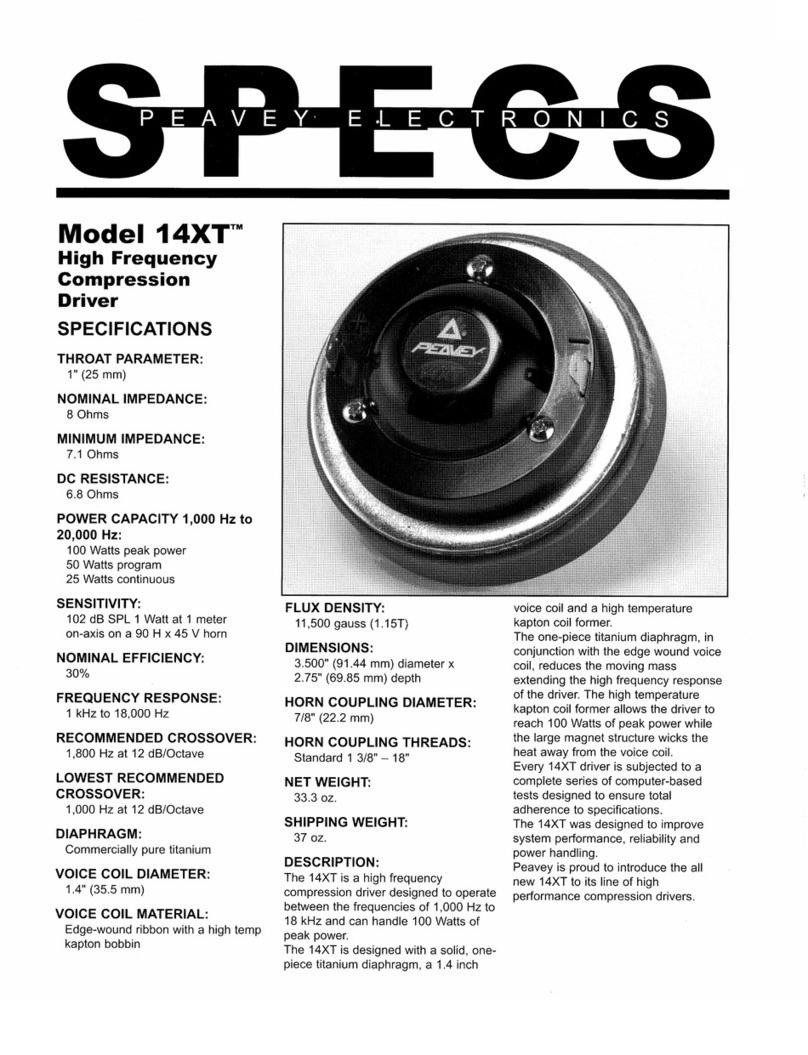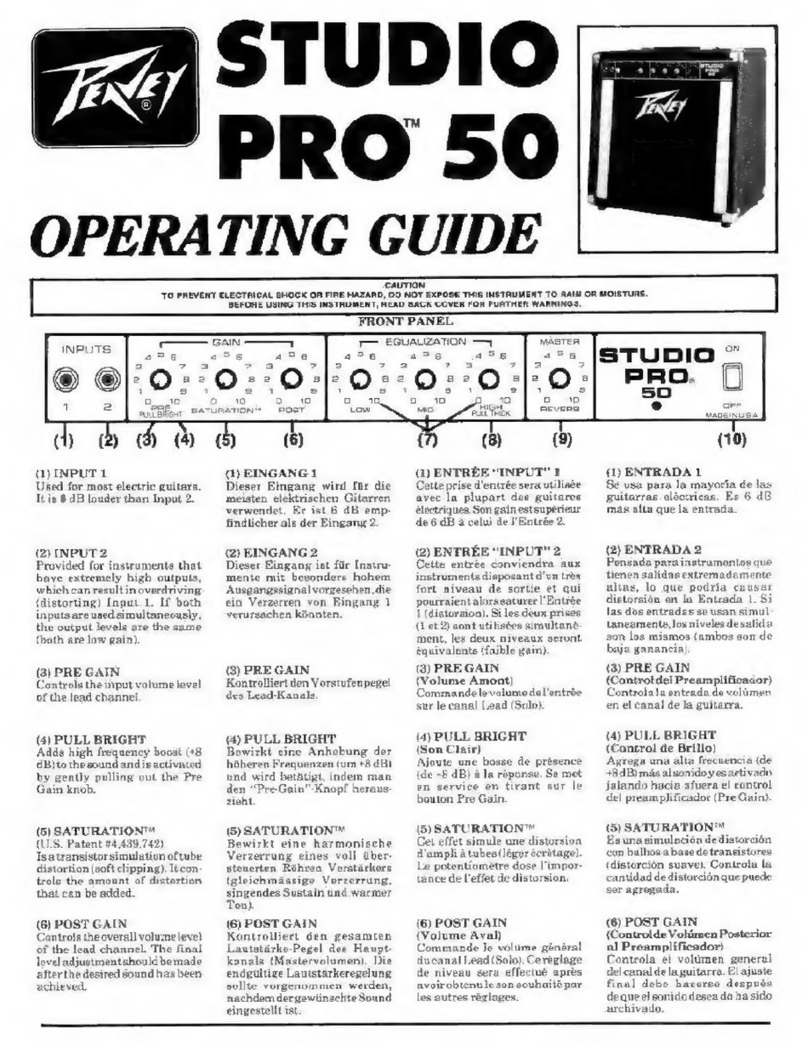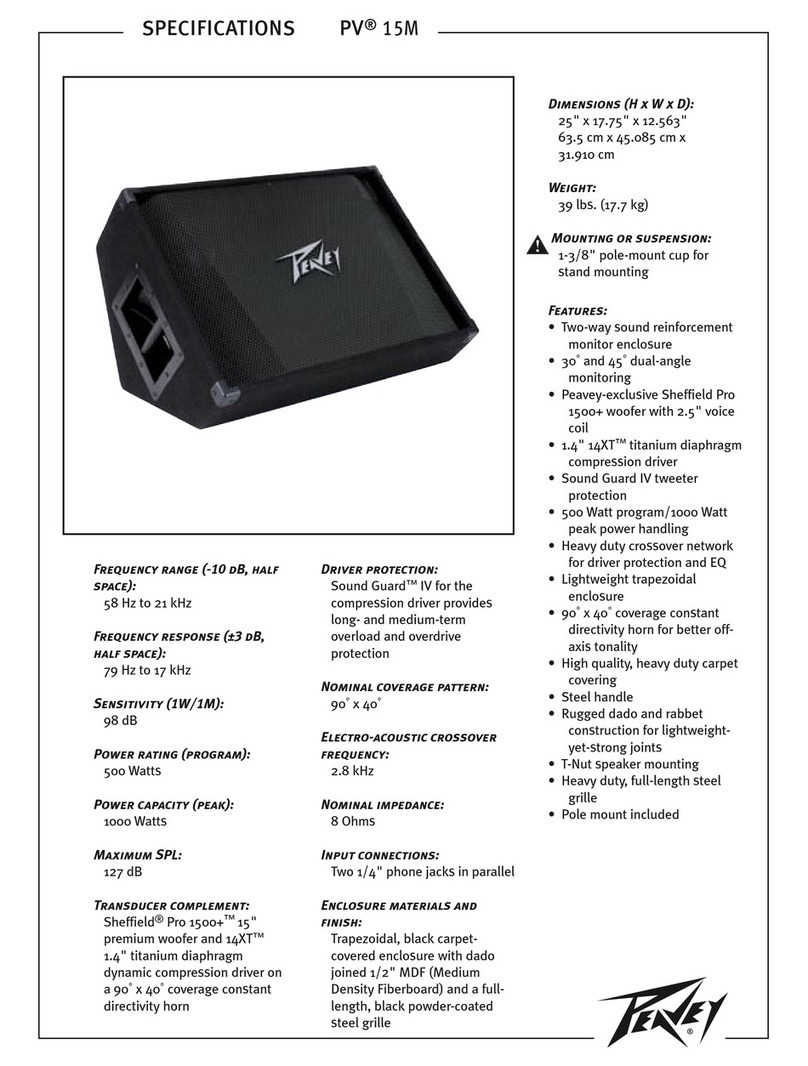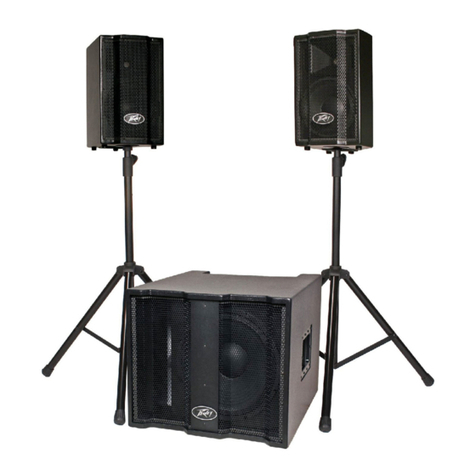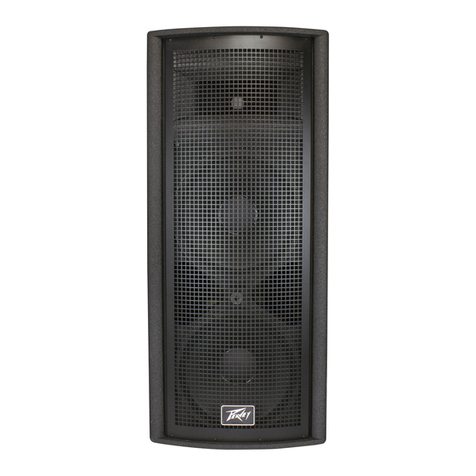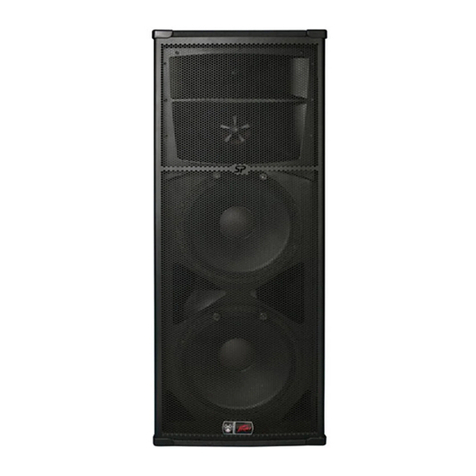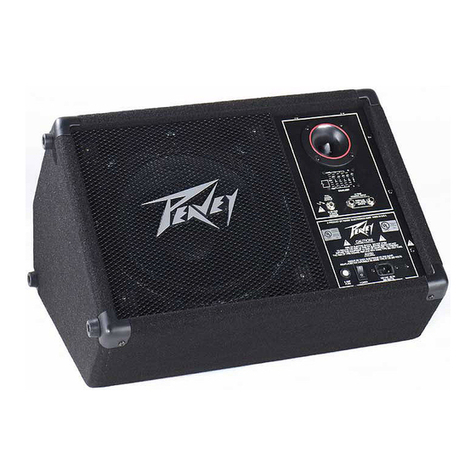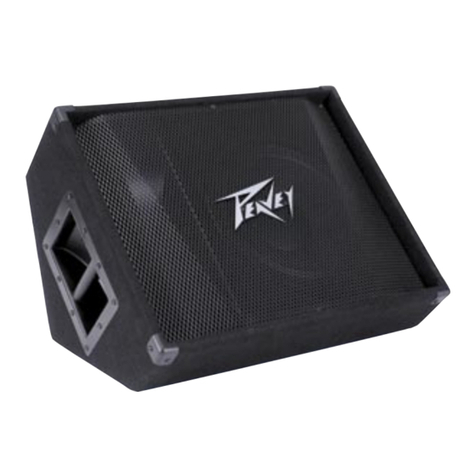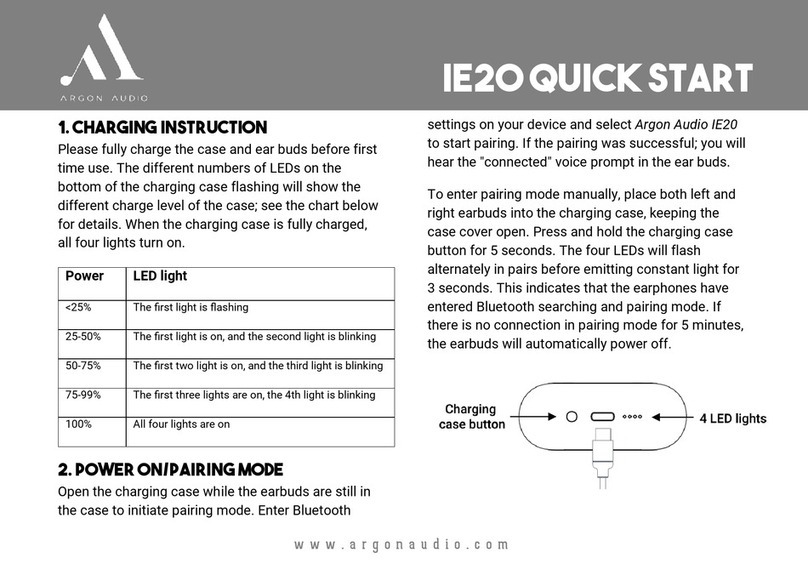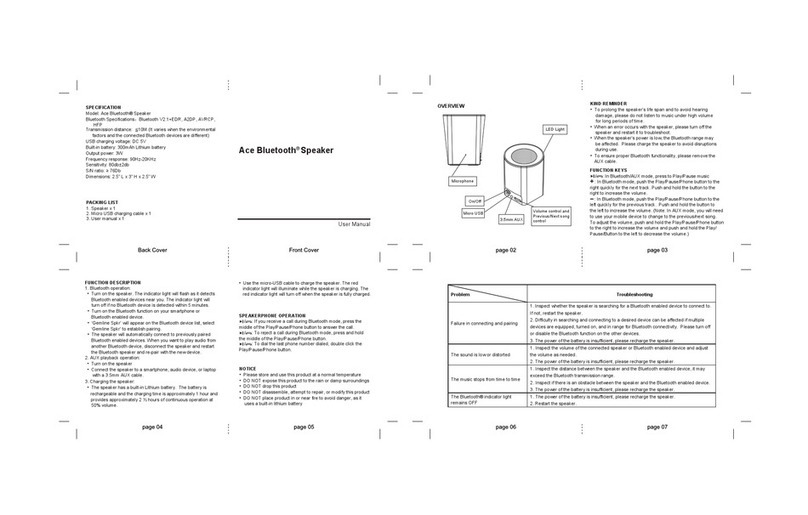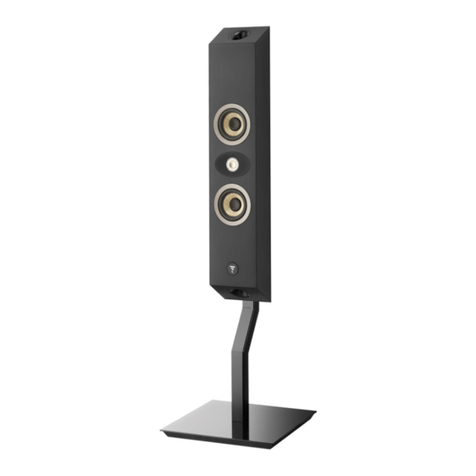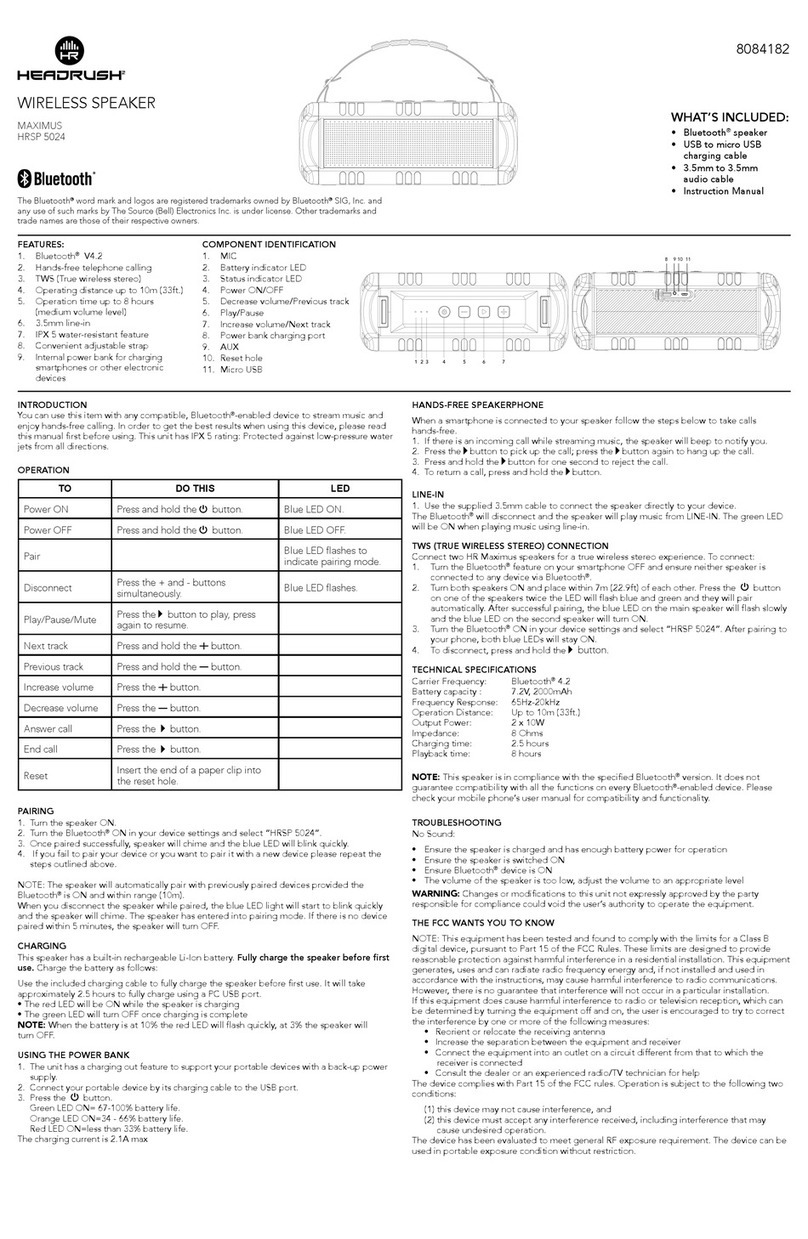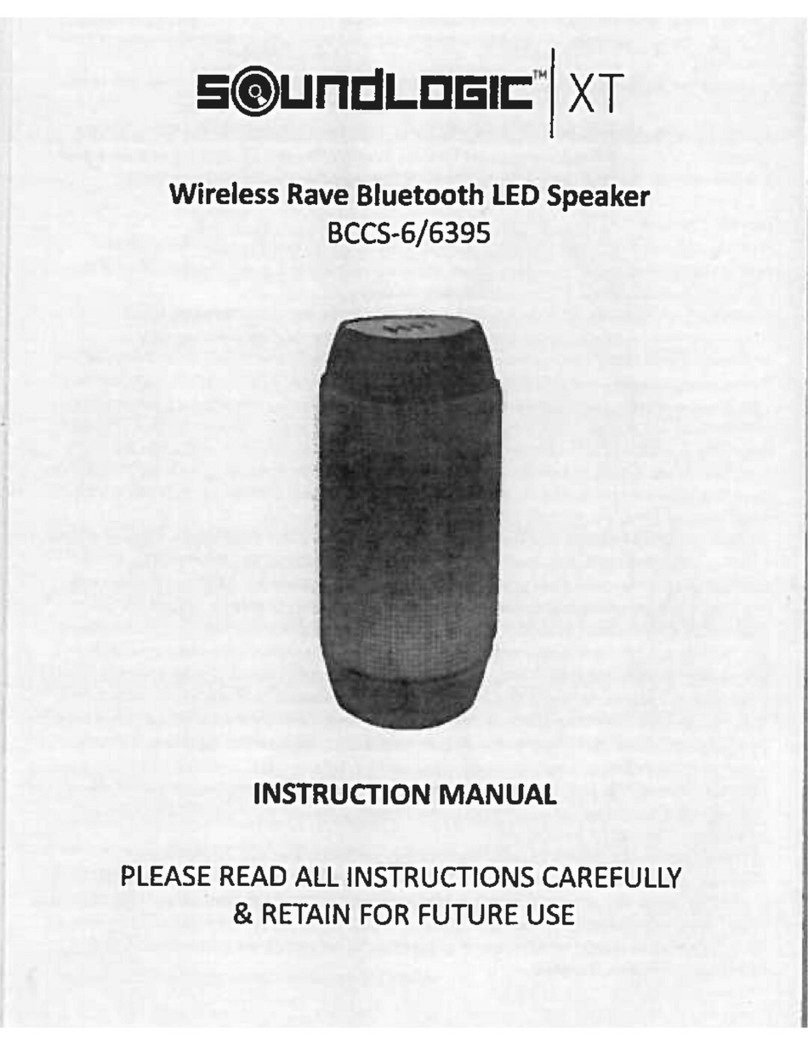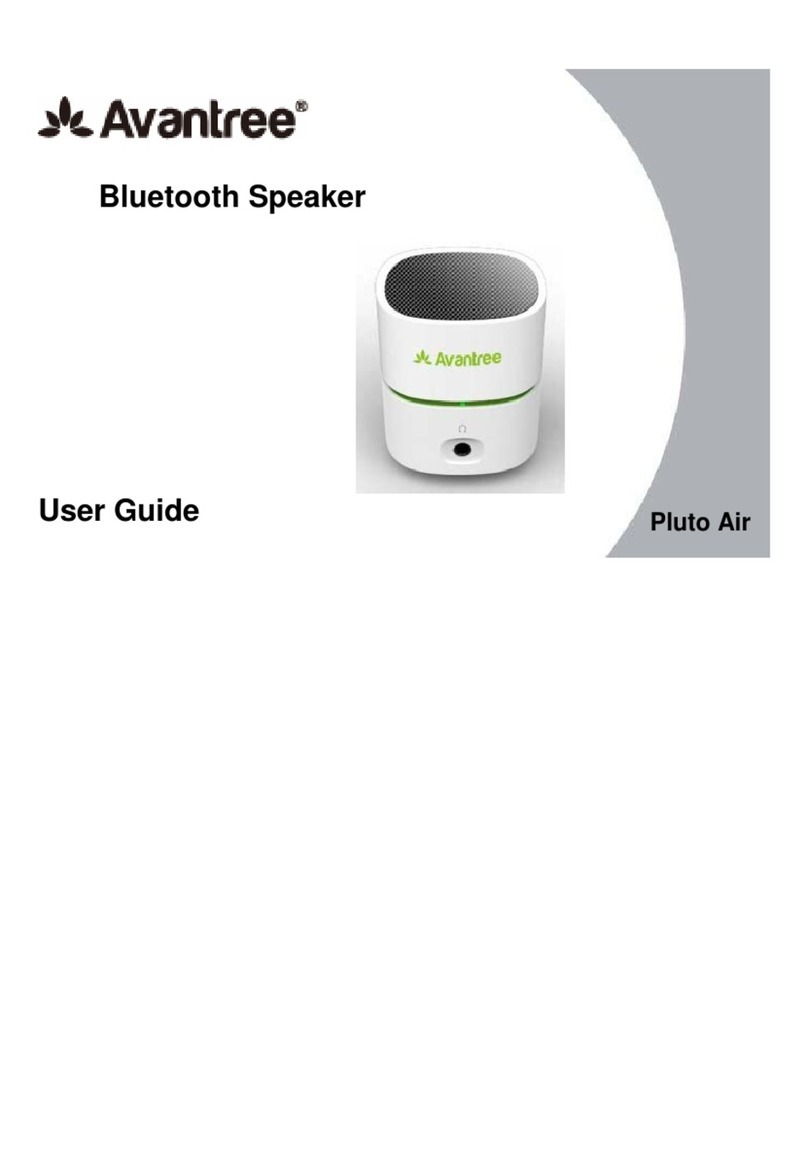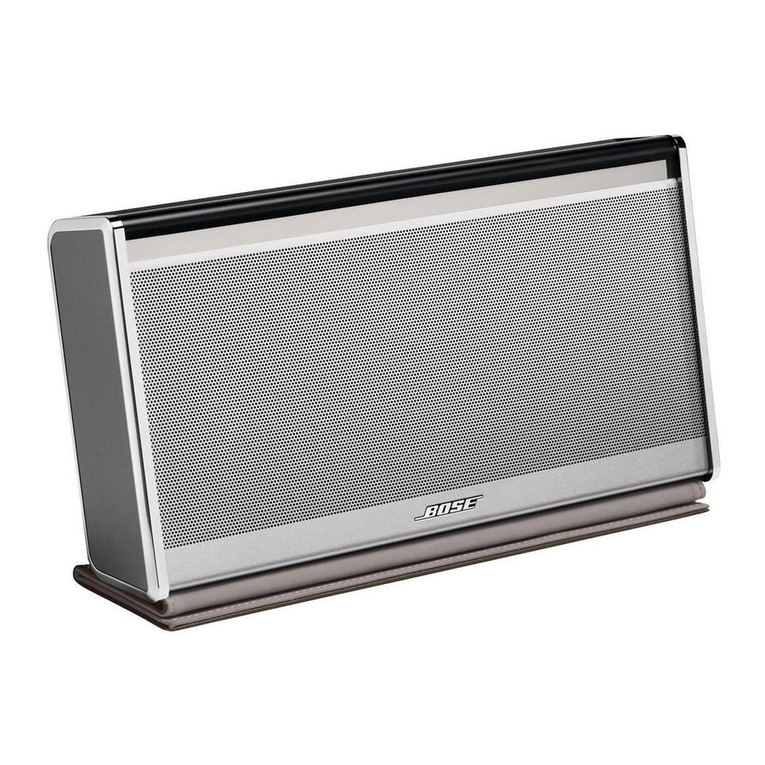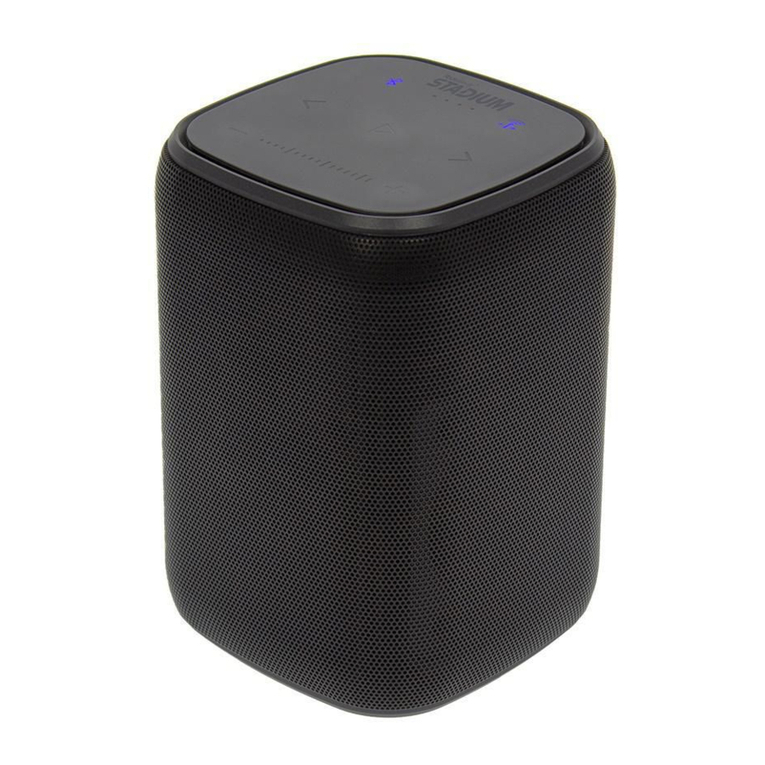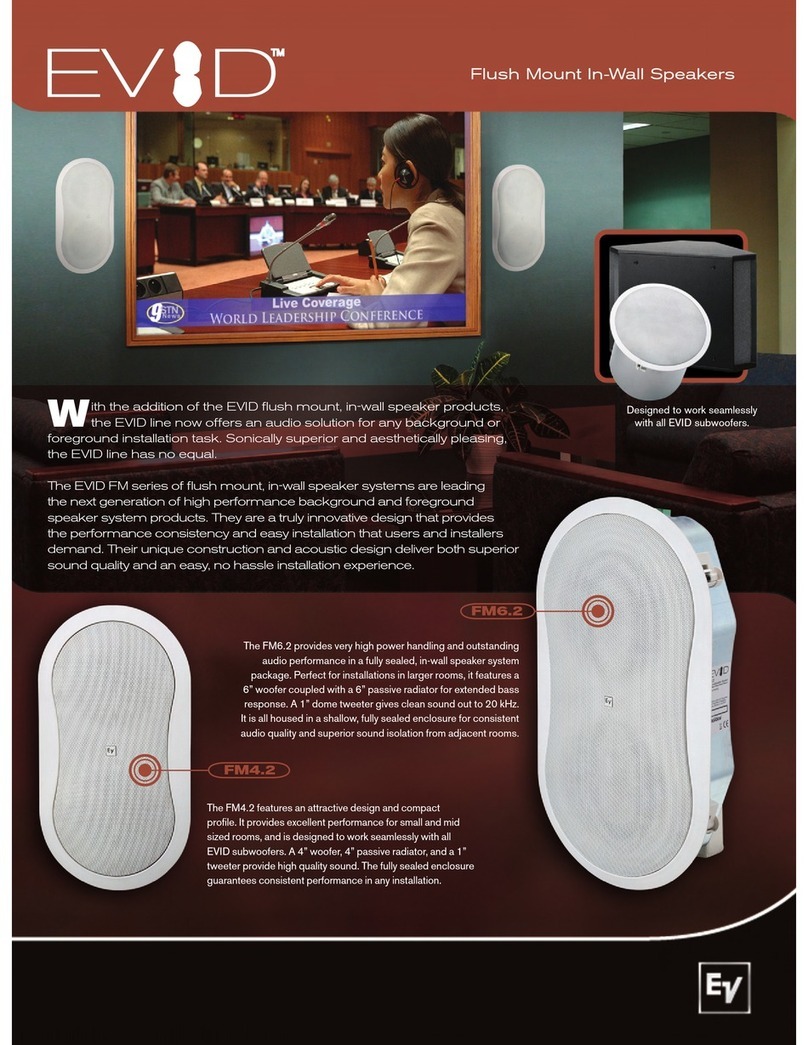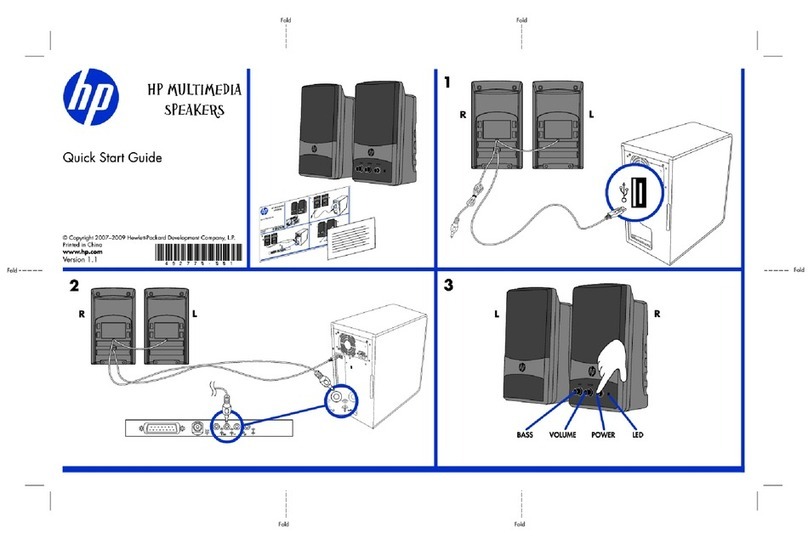
VoltAGe selection process
CAUTION: Always disconnect AC power cord from unit, or AC power
source before attempting to change fuse/voltage selector position!
WARNING!: Before AC power is applied to this device,
always insure proper operating voltage selection is
engaged to match AC power source being used.
Fuse holder tray (2) may select 110-120V AC or 220-240V AC by
aligning the arrow on bottom right of the IEC jack assembly with
the fuse holder arrow of the proper voltage range. To change
voltage range selection, remove fuse tray and flip tray over 180
degrees and re-insert into fuse holder. The fuse tray can be
removed by inserting a small flat blade screw-driver near the top
center edge of the fuse tray, and gently lever the fuse tray out.
The fuse tray will push outward and be sticking out approximately
1/4", then grasp the tray and pull it out all the way.
The fuse should be changed to the correct amperage rating. For
an input power voltage range of from 110VAC to 120VAC, use a 3.15
amp rated, 250V 5 x 20 mm cartridge type time-delay fuse, which
conforms to the international fuse classification "T3.15A". For an
input power voltage range of from 220VAC to 240VAC, use a 2.0
amp rated, 250V 5 x 20 mm cartridge type time-delay fuse, which
conforms to the international fuse classification "T2.0A".
The IEC power cord that is correct for your locale can now be
plugged into the IEC receptacle (3), and the Power switch (1)
activated to turn on the powered PBK15BT speaker system.
ON-OFF SWITCH (1)
This rocker switch supplies AC power to the PBK15BT™ when
switched to the ON position. The ON position is with the top side
of the switch pushed “in" or nearly flush with the rear panel.
FUSE (2)
The unit is AC power line fuse protected from overloads
and fault conditions with a slow-blow 5 x 20mm 250V fuse.
This fuse is located within the base of the IEC power cord
connector (2), just below the IEC connector blades. If the fuse
fails, THE FUSE MUST BE REPLACED WITH THE SAME TYPE AND
VALUE IN ORDER TO AVOID DAMAGE TO THE EQUIPMENT AND TO
PREVENT VOIDING THE WARRANTY!
The fuse in the Peavey PBK15BT can be replaced with a time-
delay type 5 x 20 mm size 250V rated fuse.
For 110-120VAC operation, a fuse rated at 3.15 amps and 250V should be used, which conforms to the
international fuse classification "T3.15A".
For 220-240VAC operation, a fuse rated at 2.0 amps and 250V should be used, which conforms to the
international fuse classification "T2.0A".
If the unit continues to blow replacement fuses, do not keep replacing them, it should be taken to a qualified
service center for repair.
To replace the fuse, be sure to remove the IEC power cord from the IEC socket. The fuse holder tray is located
beneath the IEC socket cavity. Pry the fuse holder tray out with a small flat blade screwdriver placed under the
center of the top edge of the fuse tray, and gently lever the fuse tray out. The fuse is held in a clip in the fuse tray,
and should be removed and replaced with a fresh 5 X 20mm 250V type fuse of the appropriate current rating.
reAr pAnel
